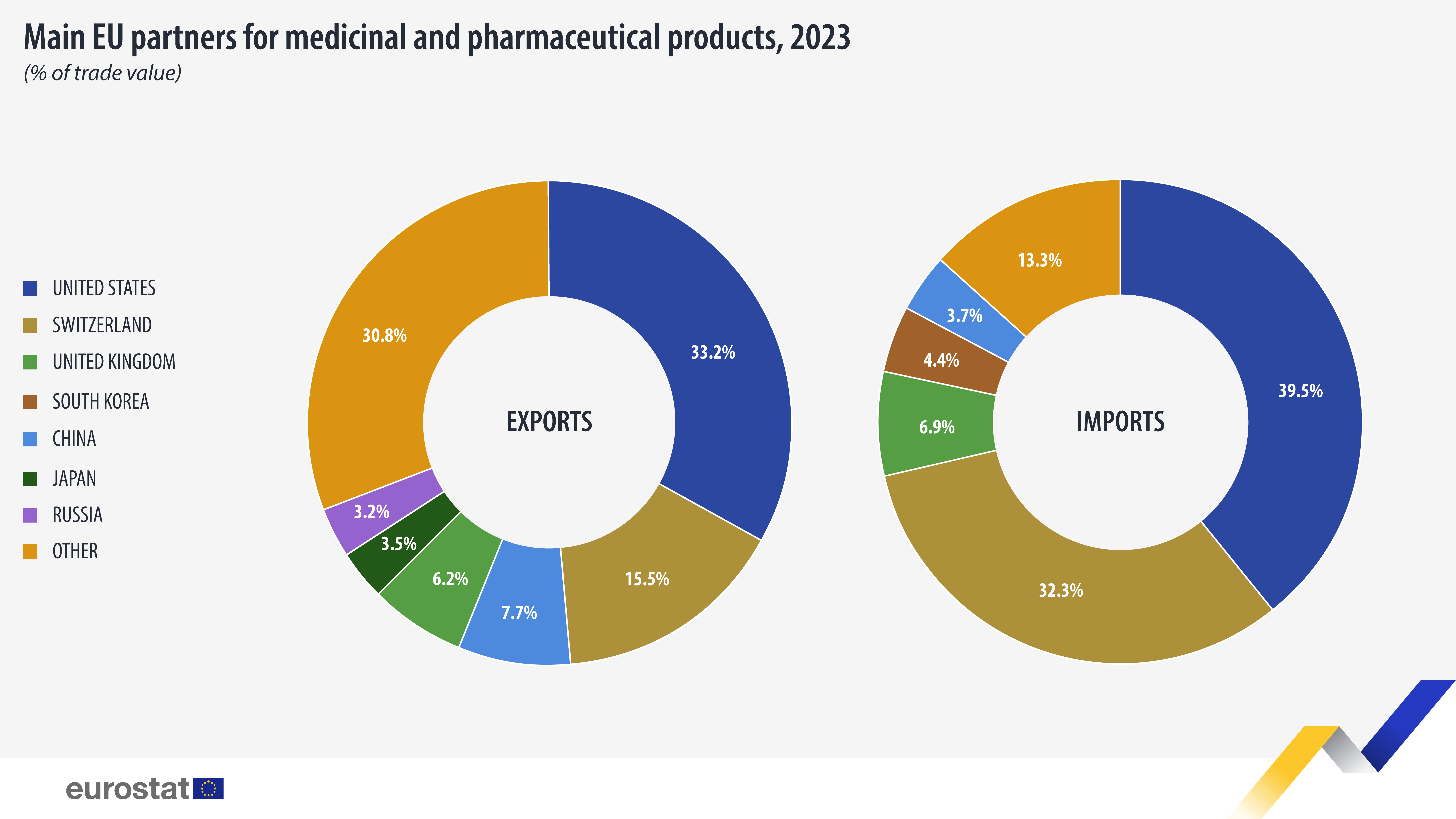Medicinal and pharmaceutical products: Exports down in 2023

In 2023, EU exports of medicinal and pharmaceutical products to countries outside the EU went down by -3.5% when compared with 2022. On the other hand, EU imports increased by 6.1% in 2023.
In 2023, exports reached €277 billion, while imports stood at €119 billion. Consequently, the EU's trade surplus in medicinal and pharmaceutical products amounted to €158 billion, marking the second-highest figure ever recorded, following the peak in 2022 at €174 billion.
Source dataset: ds-018995
Decreases in exports from Germany, Belgium and Ireland in 2023
In 2023, Germany was the EU’s largest extra-EU exporter (€62 billion), followed by Belgium (€44 billion) and Ireland (€37 billion), all three registering decreases when compared with 2022.
The largest extra-EU importers of medicinal and pharmaceutical products were Belgium (€26 billion), followed by Germany (€20 billion) and the Netherlands (€16 billion).
USA and Switzerland main trade partners
The main destination of extra-EU exports of medicinal and pharmaceutical products in 2023 was the United States, accounting for a third (33.2%; €92 billion) of these exports, followed by Switzerland (15.5%; €43 billion) and China (7.7%; €21 billion).
Source dataset: ds-018995
Imports of these products to the EU came mainly from the United States, accounting for 39.5% of all EU imports of these products, then Switzerland (32.3%) and the United Kingdom (6.9%).
For more information
- Statistics Explained article on international trade in medicinal and pharmaceutical products
- Thematic section on international trade in goods
- Database on international trade in goods
Methodological notes
- The Standard international trade classification (SITC) product code used for medicinal and pharmaceutical products is 54.
- Dutch and Belgian trade flows are over-estimated because of the so-called ‘Rotterdam effect’ (or quasi-transit trade): goods originating in other EU countries that are exported through Dutch and Belgian ports are, according to EU rules, recorded as extra-EU exports by the Netherlands and Belgium. Similar considerations apply to imports from countries outside the EU that arrive in Dutch and Belgian ports and are re-exported to other EU countries.
If you have any queries, please visit our contact us page.


